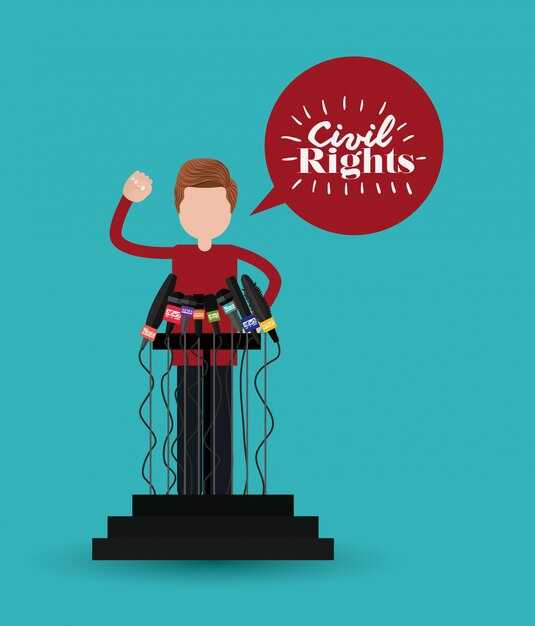This one habit ends every conversation — not occasionally, not just with certain people, but every single time. The worst part is that if you have trouble connecting, you might be doing this without even realizing it and then blaming yourself when people pull away. Whether it’s an occasional slip or a lifelong pattern, you can absolutely learn to change it. Here’s how it shows up. Someone confides in you — maybe they’re anxious about a job interview or hurt because a friend let them down — and instead of meeting that disclosure, you correct them, offer advice, make a joke, change the subject, cut in with your own story, challenge the facts, go quiet, act unimpressed, or roll your eyes. Those moves are conversation killers and they slowly poison relationships. Why do people respond to real vulnerability by shutting a connection down? Because most of us are craving connection in those moments. For me, I never learned how to connect well at home. My siblings and I mostly raised ourselves; our parents were emotionally distant, and we didn’t have conversations about school, friends, or feelings. With friends I spent a lot of effort hiding how bad things were, out of shame — I wanted to seem normal so I wouldn’t get excluded. I survived by instinct and people-pleasing. When things got tense or a conflict came up, instead of talking it through I’d deflect with humor, dissolve into tears, or avoid the person entirely without explaining why. Over years, keeping people at arm’s length hollowed out my relationships and I only taught myself how to really listen and connect in my mid-forties. Now I can spot that uneasy avoidance in others: it’s discomfort with emotion, often learned from family, and sometimes it’s just how a personality shows up. Some people are natural talkers, some are fixers, some are thinkers — and without deliberate practice, those tendencies become obstacles. Patterns don’t live only in your head; they come out in your posture, tone, eye contact, timing, and especially in how you respond to another person’s vulnerability. If you repeatedly cut off the emotional flow of a conversation, intentions don’t matter — people won’t feel safe, they won’t feel close, and they won’t want to open up again. Connection doesn’t die from a single betrayal or explosion; it dies from a hundred small dismissals — a hundred little moments where one person tried to be real and the other couldn’t meet them. So what can you do instead? Step one is to notice which conversation stoppers are yours. In my book Connectability I outline ten common culprits: overtalking, not showing you’re listening, rushing to give advice, interrupting, or withholding affirmation, among others. One very common issue is failing to indicate that you’re actually listening. You may be paying attention, but if your face and body don’t show it — no nods, no eye contact, no tiny signals that the other person’s words are landing — you create emotional static and the other person eventually shuts down. Talking too much is another stopper. Anxiety often makes people fill every gap, thinking they’re building a bond when they’re actually blocking it. Introverts or those who get emotionally overwhelmed need quiet to find their words; if you never pause, they never get the chance to speak. Often they’re gathering themselves and preparing to say something, and when you break in, even innocently, it cuts them off. Repeatedly doing that makes them stop trying. Then there’s the “fix-it” reaction: someone shares a struggle and you instantly move into problem-solving. You don’t mean to dismiss, but it reads that way, because often people opening up are not asking for solutions — they want presence, validation, a simple, “That sounds really hard.” Many of us who grew up trying to manage others’ feelings leap into fixing because it feels helpful, but it frequently leaves the speaker feeling unheard. Competitive storytelling is another familiar trap: instead of receiving someone’s vulnerability, you top it with your own bigger, louder version. They say, “I had a rough day,” and you respond, “You should hear what happened to me.” Again, not usually malicious, but it freezes connection. If you recognize yourself in these patterns, know this: you aren’t broken or bad. These are adaptive strategies that once protected you, but they don’t serve you now. The good news is change is possible. In many cases you already know how — you’ve just forgotten or never had the chance to learn. A practical next step: I offer a free daily-practice course that teaches two simple techniques to calm the inner storm when you’re triggered. It’s short and powerful, and it helps you feel clearer, more focused, and calmer quickly. Click the second link in the description below or use the QR code and you can begin right away. The true antidote to conversation stoppers is surprisingly straightforward and surprisingly rare: affirmation. Not empty flattery, but demonstrating that you value what someone is saying — that you understand and care. That can look like a nod, a soft “yeah,” a mirrored phrase such as “That sounds so frustrating,” or simply holding the silence so the other person can go deeper. It’s not about performing empathy; it’s about slowing down, stepping out of your own head, letting go of the urge to fix or impress, and being present. Presence is what makes people feel safe — and when people feel safe, they open up; that’s where connection lives. Of course, presence isn’t always easy. If you’re emotionally overloaded, distracted, or locked into old habits, being truly present takes work. Lots of people — whether they’ve experienced trauma or not — fall into disconnecting patterns. Stress, personality traits like over-analysis or introversion, social nervousness, or coping habits such as joking, offering quick solutions, or always having a smart comment can short-circuit real conversation. Maybe you lacked role models for listening, or you learned shallow, performative connection online. None of that makes you a bad person — it makes you human, with room to grow. Your nervous system plays a role, but so do your choices. Once you spot the behaviors that shut people down, you can intentionally swap them for actions that build warmth, trust, and true connection. Quick aside: if you’re watching these videos and wondering whether old trauma affects you now, there are signs that your present struggles could be linked to childhood neglect or abuse. It helps to know this because it normalizes what’s hard and shows that healing is possible. You can download a “signs of childhood PTSD” quiz by clicking the top link in the description or using the QR code. Here’s how the daily practice I use helps. It’s a paired set of techniques I’ve relied on for thirty years. We write out our fears and resentments, ask for them to be removed, and then rest in a short, quiet meditation whose only intention is rest. You don’t have to force your mind to be blank — you’ll still breathe, of course — but the practice creates space to release the need for immediate action and lets things settle after you’ve done the writing. Often when you come out of that rest, much of your reactivity has softened and a lot of the problems that felt overwhelming have faded. You don’t have to fix anything in the moment or impress anyone; you just need to be with someone, and that presence is more powerful than the perfect phrase. Being present doesn’t require flawless language — it requires the willingness to witness: to truly be there with your attention, to hear what lies beneath someone’s words, and to reflect back their value. So today I challenge you to do two things. First, identify your default conversation stopper: do you interrupt, talk too much, give advice too quickly, or withdraw? Find it, acknowledge it, and write it down. Second, practice one act of affirmation with another person today. When someone speaks, pause before reacting, really listen, and then say something that shows you heard them — not a random compliment, but something that reflects what they just shared. That’s where meaningful connection begins: not with perfection, but with presence. If you liked this video, there’s another one you’ll probably enjoy — it’s right over there, and I’ll see you in that next one. Their mom just died, and instead of offering empathy, you launch into a long story about when your mom died. [Music]
Practical tools you can use right now
Below are short, concrete practices and phrases to help you shift from shutting people down to creating safety and connection.
- Pause-Breathe-Respond (PBR) — When someone shares, pause for one second, take a slow breath, then respond. That one beat reduces automatic reactions and lets you choose presence.
- Three-step reflective listening — 1) Listen without interrupting. 2) Reflect back a short sentence that captures the feeling (“It sounds like you’re really overwhelmed”). 3) Ask a gentle open question if appropriate (“Do you want to talk more about that?”).
- Ask before advising — If you feel the urge to fix, try: “Do you want my advice, or would you prefer I just listen?” This simple question honors the speaker’s needs.
- Micro-affirmations — Small signals build safety: a nod, “Mmh,” “That sounds really hard,” “I hear you,” or “Thanks for telling me.” Use whatever feels authentic.
- Short scripts to repair a slip — If you realize you cut someone off or overshadowed them, say: “I’m sorry — I realized I interrupted/talked over you. I want to hear more if you’re willing.” A brief apology and invitation to continue repairs most damage.
Examples of validating responses
These are quick, concrete replies you can adapt to sound natural:
- “That sounds really tough. I’m glad you told me.”
- “I can hear how upset you are. Would you like me to listen or help problem-solve?”
- “You’ve been carrying a lot — thank you for sharing that with me.”
- “I don’t know exactly what that’s like, but I’m here with you.”
Short daily practice (5 minutes)
- Write: Spend 2 minutes listing any worries or reactive thoughts you had today.
- Release: Read them aloud or fold the paper and put it away — symbolically letting go of needing to act on them right now.
- Rest: Sit quietly for 2–3 minutes, breathing gently. Notice sensations without judging.
Do this before social interactions when possible; it calms reactivity and makes presence easier.
Context tips
- At work: Keep responses brief and empathetic (e.g., “That sounds frustrating. How can I support you?”). Save problem-solving for when it’s invited.
- With friends: Mirror feelings and name them (“You seem really disappointed”). Offer space rather than immediate fixes.
- With family: Expect old patterns to trigger both of you. Use the pause and a repair script quickly when old roles appear.
- In romance: When feelings get intense, say, “I want to hear you — can we slow down so I can really listen?”
When to seek extra help
If you find persistent patterns of shutting people out, chronic avoidance, or overwhelming reactivity tied to past trauma, consider working with a therapist or coach. Professional help can give you tools to retrain your nervous system and practice safe, sustained presence in relationships.
Small, consistent shifts matter more than perfect performance. Start with one habit — the pause, a reflective sentence, or asking before giving advice — and practice it until it becomes second nature. Presence is a skill you can learn; the people in your life will notice the difference.


 You’re Losing People — And You Don’t Even Know Why (Why They Pull Away)">
You’re Losing People — And You Don’t Even Know Why (Why They Pull Away)">



 If you’re the GIVER, Don’t Neglect THIS!">
If you’re the GIVER, Don’t Neglect THIS!">
 Why You Should Assume Avoidants ALWAYS Come Back">
Why You Should Assume Avoidants ALWAYS Come Back">
 What Does It Mean If Losing Friends Is a Pattern?">
What Does It Mean If Losing Friends Is a Pattern?">
 Some People Are Not Wired to Experience Romantic Love">
Some People Are Not Wired to Experience Romantic Love">
 THIS Means an Avoidant Wants YOU to Reach Out | Jordan Peterson Motivational Speech">
THIS Means an Avoidant Wants YOU to Reach Out | Jordan Peterson Motivational Speech">
 I was blindsided when she left.">
I was blindsided when she left.">
 These Relationship Needs Don’t Make You "Too Needy"">
These Relationship Needs Don’t Make You "Too Needy"">
 5 Subtle Signs of Disrespect From an Avoidant Partner">
5 Subtle Signs of Disrespect From an Avoidant Partner">
 Cheating Red Flags: 7 Predictors for Betrayal (From a Cheater)">
Cheating Red Flags: 7 Predictors for Betrayal (From a Cheater)">
 Tired of Asking for the BARE Minimum in your Relationship?">
Tired of Asking for the BARE Minimum in your Relationship?">